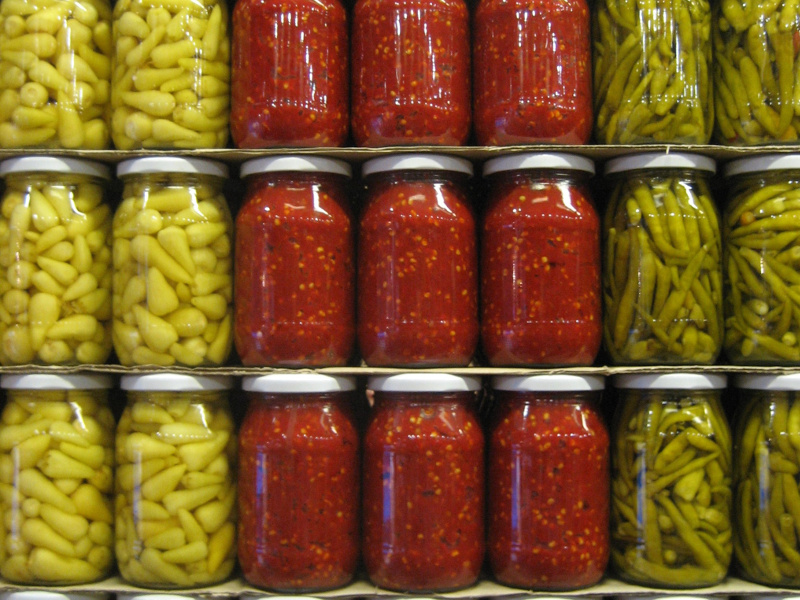
Yogurt is the main dairy product in the diets of peoples stretching in a wide arc from North Africa through the Mediterranean, Middle East, Eastern Europe and Caucasus on into the Indian subcontinent. It is a favored form of milk for many cultures as it is easily digested, is a good source of protein, holds well and has probiotic qualities.
The word yogurt comes from the Turkish word for “thick.”

Yoğurt
Course: Dairy and CheeseCuisine: Turkey1
quartYogurt is the main dairy product in the diets of peoples stretching in a wide arc from North Africa through the Mediterranean, Middle East, Eastern Europe and Caucasus on into the Indian subcontinent.
Ingredients
Milk, nonfat, lowfat or whole — 4 cups
Plain yogurt with active cultures — 2 tablespoons
Directions
- Place two a heat-proof, glass pint jars in a large pot and cover them with water. Set the pot over medium heat and bring to a boil. Reduce heat to very low and simmer, leaving the jars in the water to sterilize them while you prepare the milk.
- Bring the milk just below a boil (about 180 to190º F) over medium heat in a medium-sized saucepan. Remove from heat and cool to precisely 110ºF.
- Using clean utensils, whisk the yogurt into the scalded milk. Remove the sterilized jars from the simmering water and set them on a countertop. Pour the scalded milk into the jars and seal the jars with tight fitting lids.
- Set the jars in a warm, protected place for 6 to 8 hours to allow the milk to culture and thicken. There are a couple ways to do this: 1) Place the yogurt in a gas oven with a lit pilot light; or 2) Wrap the jars with several bath towels to insulate them and keep them warm for as long as possible. IMPORTANT: Do not disturb the yogurt during this time or it may fail to thicken.
- Once the yogurt has thickened, refrigerate and store for up to 2 weeks.
Yogurt Notes and Variations
- Greek or Bulgarian-Style Strained Yogurt: Strain the finished yogurt in a cheesecloth or coffee filter-lined sieve for several hours in the refrigerator to drain away excess liquid.
- Whole milk produces a creamier, milder, more full flavored yogurt that works better as an ingredient in recipes requiring heat.
- Yogurt can be made out of milk from goats, sheep, buffalo, horses or even camels.
- Instead of pint jars, the yogurt can be placed in the containers of a commercial yogurt maker, following their directions. Alternatively, after whisking the culture into the scalded milk, place the liquid into a thermos large enough to hold it all. After the yogurt has thickened overnight, transfer it to clean glass jars.
- When dishing out yogurt, always use very clean utensils. The yogurt will stay fresh much longer this way.
- Other names for yogurt: Arabic: laban; Bulgaria: iogurt; Greece: yiaourt, or yaourt; India: dahi; Iran: mast
Whats4eats is a participant in the Amazon Services LLC Associates Program, an affiliate advertising program designed to provide a means for us to earn fees by linking to Amazon.com and affiliated sites.














